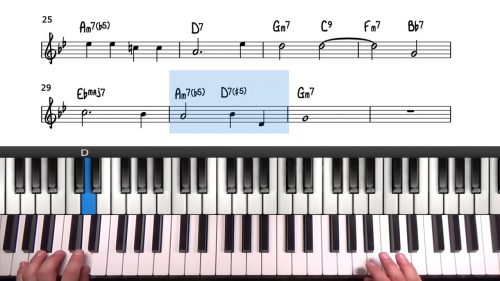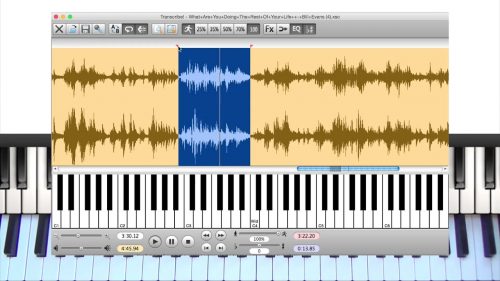Working With Singers: Solos & Endings
Welcome to this lesson on solos and endings when accompanying singers.
So far in this course, we have covered the fundamental skills and requirements when accompanying a vocalist. We’re now going to explore the improvisation and ending of the tune.
We’ll continue to use Autumn Leaves in Gmin as our sample song.
The Solo Section – Your Time To Shine!
You’ve been laying off the melody and really giving your singer the space to express and modify at their leisure. Now, it’s your turn to shine. All bets are off you can play however you like. Here you can do all the fun things that pianist love to do, show off your chops, and get as complicated as you like here.
Remember that simply playing the melody is often a fun, easy way to shine as a soloist since the audience has heard the melody but not on an instrument, so it’s a big win to bring it out in your solo. Of course, you can add lots of embellishment to this melody whilst still referencing the main melodic motifs.
Singers Take Solos Too – The Art Of Scatting
Many jazz singers like to improvise as well, but not all. It’s often referred to as scatting. Scatting is making up the melody on the spot, using common syllables, rather than lyrics. It’s the opposite of rap which is improvised lyrics with out melody.
Great scatters stay locked into the melody, and chords of the tune, whilst improvising. So playing simply and cleanly comes back into play here, more important than ever.
We explore accompanying a scat solo with a full demonstration.
Ending The Tune With A Singer
Typically, you will be ending the tune in one of the following ways:
-
The "tag ending" is when you do the last 4 measures an extra 2 or 3 times. The singer will typically go rubato for their last tag.
- The singer might add a rit. somewhere in the last 4 measures which signal that you will be doing a direct ending. When this happens, you follow the singer’s hand signals and body movement to hit with them. And typically a big crescendo of sound happens after their last note.
Practice Tips
-
If you are accompanying a singer for the first time, it's a good idea to play completely simple for the first head, not adding in fills at all.
-
Use all your simplified, clean chording techniques for a scatter's solo
-
You can discuss the ending before the song is started, or you can just follow the singer for the ending. Memorise the common endings covered in this tutorial.
-
Listening to your singer is key. If you are properly listening, then you will keep it clean and simple in aid of your singer.
-
As Miles Davis says, Do not fear mistakes. There are none. And truthfully that's the fun with jazz. I love using any unexpected notes, or even lyrics as I've done a few times even in recording these videos, to dig deeper into your creativity and really stay present in the moment of music.
- Good music is about honest expression, not perfect notes.







The practice track at the end is great, I had a lot of fun singing along, and you can even create a countermelody to Lyndol’s voice :)
That’s great to hear Natasha. I also think it’s a wonderful addition to the lessons.
We plan to include this for all of Lyndol’s jazz standard lessons, and the same exercise is at the end of the vocal accompaniment tutorial on Summertime which has been recorded and edited and will be published shortly :-)
I would olso add Louis Armstrong i really like his scatting.